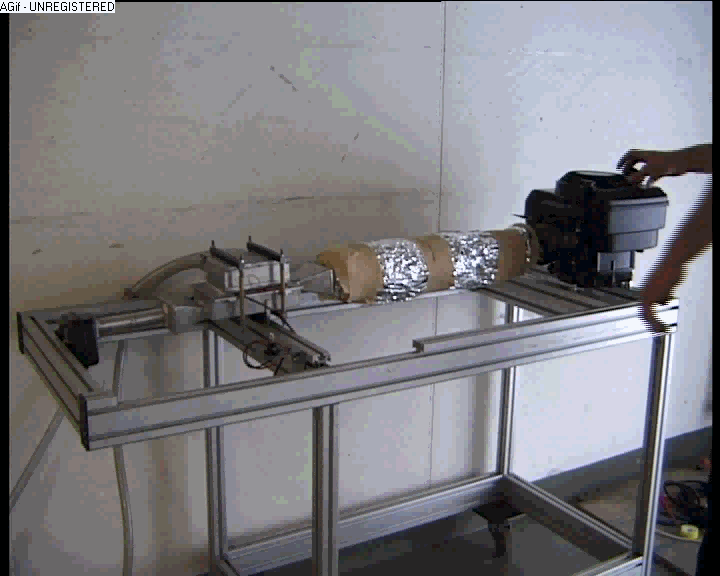My Projects
Topic: Thermoelectrics
Title: Direct Recuperation of Exhaust Heat for Onboard Electricity Supply

The picture sequence shows an experimental setup for direct thermoelectrical conversion of energy.
A combustion engine with 3.5 kW power produces exhaust gases with a temperature up to 200°C.
This exhaust is conducted by a pipe to water-cooled thermoelements.
The electricity obtained makes a small light bulb shine
.
What one doesn’t see:
The thermoelements employed here are some sort of tiles, which are arranged around the exhaust pipe. The tiles themselves consist of layers with different electrical conductivity, for instance by metals with different electronegativity or respectively doted semiconductors. When a layer is heated on one side, the electrons receive a supplementary kinetic energy and thereby pass over to the next layer. When this next layer is cooled, then the thermal flow is partly conversed to an electric current. However, since the thermal flow is also transferred by lattice oscillations – aka phonons – and spreads in any direction, the efficiency factor for this kind of energy conversion attains just a few percents at maximum.
What’s behind it:
The energy of hot exhaust gases are sparsely recuperated up to know. Therefore, even a few percentages are infinitely more than nothing at all. In fact, the mechanical efficiency of a combustion engine is just 30 to 40% of the fuel energy. This means that almost twice of the mechanical power gained is blown off into the environment after warming up. If one manages to regain just 1% as electricity, a motor with 150 kW (or about 200 hp) provides already 3 kW of electric power. This represents more than the usual power of the on-board generators in luxury cars.
What you can obtain from it:
Although the power density of thermoelements is comparable to usual dynamos with about 2 kg/kW, the specific costs per kW is considerably higher. Additionally, often cars are not operated beyond the warm-up phase, so that the battery of a car might run out of supply. However, an application seems reasonable for the purpose of continuously operated vehicles, such as company cars or trucks. Yet, there are other alternatives to consider, such as the recuperation of electrical energy at braking or exhaust-free electric propulsion. Another application for thermoelements is a heat control of energy converters in general since the thermal flow can be hindered or enhanced by the direction of the electric current. Since motors need generally a suitable temperature to be operated at maximum efficiency, the starting loss can be reduced by applying a counter voltage to prevent cooling – or otherwise the thermal flow can be enhanced by an electrical current to avoid overheating.
My related publications:
Vorrichtung und Verfahren zur Temperierung von elektrochemischen Energiewandlern (Apparatus and Operation for Tempering Electrochemical Energy Converters), German patent DE 102 10 634 (2002)